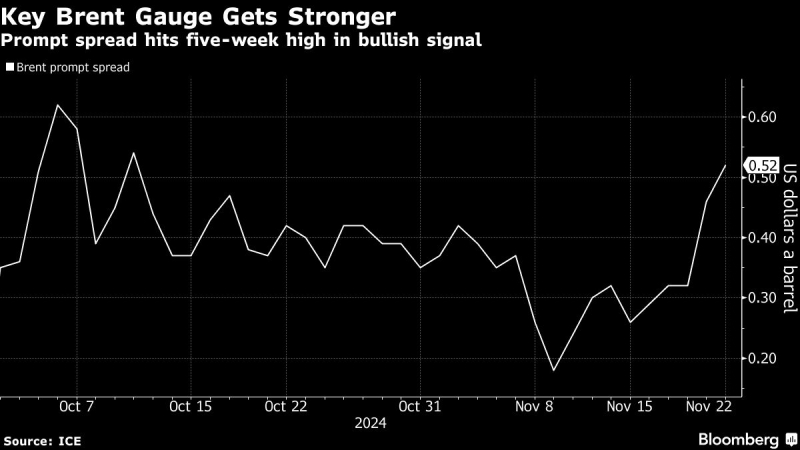
- The American Stroke Association has updated its guidelines on stroke risk reduction for the first time since 2014.
- In their recommendations, the ASA urges healthcare professionals to carefully screen patients for risk factors such as high blood pressure, elevated cholesterol levels, obesity, and high blood sugar.
- The new stroke guidelines highlight unique risk factors for females and transgender women and how social determinants of health impact stroke risk.
- The guidelines also emphasize the benefits of GLP-1 drugs for cardiovascular health, and encourage a balanced diet, regular physical activity, maintaining a healthy weight, and getting adequate sleep.
The Centers for Disease Control and Prevention (CDC) estimates nearly 800,000 people have a stroke every year in the United States. Of these, more than 600,000 will be a first-time stroke.
For the first time in 10 years, the American Stroke Association (ASA) has updated its guidelines for reducing stroke risk. According to an ASA news release, up to 80% of strokes may be preventable through diet and lifestyle changes and other modifications.
The 2024 Guideline for the Primary Prevention of Stroke also urges healthcare professionals to carefully screen individuals for stroke risk factors, including:
- high blood pressure
- elevated cholesterol levels
- high blood sugar
- obesity
Many of the new stroke guidelines coincide with the American Heart Association’s Life’s Essential 8, which promotes cardiovascular and brain health. The lifestyle factors in the ASA’s new stroke guidelines include a healthy diet, regular exercise, better sleep, and smoking cessation.
“Patients looking to reduce their stroke risk (and cardiovascular disease risk in general) should strive to follow the American Heart Association’s Essential 8 recommendations for healthy living,” said Cheng-Han Chen, MD, an interventional cardiologist and medical director of the Structural Heart Program at MemorialCare Saddleback Medical Center in California. Chen wasn’t involved in the new guidelines.
“We recommend that people eat a healthy balanced diet, engage in regular physical activity, get an adequate amount of sleep, maintain a healthy weight, avoid tobacco and alcohol, reduce stress, and control their blood pressure and cholesterol numbers,” Chen told Healthline.
Overall, the guidelines provide a clear pathway for medical professionals and their patients. The guidelines also call for more public awareness and education about how people can lower their risk of stroke.
Women face unique stroke risk factors
The updated stroke guidelines recommend that medical professionals screen for conditions that can increase the risk of stroke in females.
Stroke risk factors affecting females include the use of oral hormonal contraceptives, developing high blood pressure during pregnancy, and pregnancy complications, such as:
- premature birth
- endometriosis
- premature ovarian failure
- early-onset menopause
The guidelines also note that transgender women and gender-diverse individuals taking estrogen may also be at an increased risk of stroke.
Social determinants of health and stroke risk
The new stroke recommendations emphasize “social drivers of health.” These non-medical factors include inequities in healthcare, education, economic stability, and structural racism.
The ASA adds that neighborhood factors such as a lack of walkability and access to healthy food also play a role. The guidelines urge medical professionals to advocate for patients in these circumstances.
“Some populations have an elevated risk of stroke, whether it be due to genetics, lifestyle, biological factors and/or social determinants of health, and in some cases, people do not receive appropriate screening to identify their risk,” said Cheryl Bushnell, MD, a professor and vice chair of research in the Department of Neurology at Wake Forest University School of Medicine in North Carolina, in a news release. Bushnell is chair of the group that wrote the new guidelines.
“This guideline is important because new discoveries have been made since the last update 10 years ago,” she continued. “Understanding which people are at increased risk of a first stroke and providing support to preserve heart and brain health can help prevent a first stroke.”
José Morales, MD, a vascular neurologist and neurointerventional surgeon at Providence Saint John’s Health Center in California Morales echoed the importance of primary stroke prevention and said the guidelines were long overdue. Morales wasn’t involved in developing the new guidelines.
“The focus on equitable access to healthcare, social determinants of health, and gender-specific recommendations are important additions to guiding clinical practice in an evidence-driven matter,” he told Healthline.
GLP-1 drugs may reduce stroke risk
The ASA’s guidelines include a new recommendation for healthcare professionals to consider prescribing GLP-1 weight loss drugs, such as Ozempic, Mounjaro, Zepbound, and Wegovy.
The medications, which have been approved by federal regulators as treatments for obesity or type 2 diabetes, have shown promise in clinical trials in improving cardiovascular health and reducing the risk of stroke.
Chen said the inclusion of newer topics such as weight-loss drugs into the new guidelines is an important step.
“These updated guidelines also incorporate the important new class of drug (GLP-1 agonists) that we are finding to be extremely effective in treating those same risk factors for stroke,” Chen noted.
Healthy diet for stroke prevention
One of the most important things you can do to prevent a stroke is to maintain a healthy, balanced diet.
The new guidelines urge people to stick closely to a Mediterranean diet. This diet focuses on the eating habits of people who live along the Mediterranean Sea.
That plan encourages people to consume more fruits and vegetables as well as legumes, nuts, seeds, and heart-healthy fats. It discourages the consumption of processed foods, added sugars, refined grains. It also recommends limiting the consumption of alcohol.
“Risk factors for stroke vary by age, gender, genetics, comorbidities, and even medications. Therefore, I think the suggestion of screening for not only the basic risk factors but also secondary factors is essential to prescribe the right lifestyle interventions,” said Kristin Kirkpatrick, MS RDN, a dietitian at the Cleveland Clinic Department of Wellness & Preventive Medicine in Ohio. Kirkpatrick wasn’t involved in the new guidelines.
“For my patients, I will often also recommend a Mediterranean pattern, but then work with the patient to assess tweaks to that pattern,” she told Healthline.
“For example, with someone who has insulin resistance or type 2 diabetes, I may focus on a more moderate carbohydrate version of the Med diet. For patients with high blood pressure, I may counsel more on a low sodium perspective. The most important component, however, may be to focus as a whole on a more plant-forward approach that limits ultra-processed foods, sugar, refined grains, and excess amounts of alcohol,” Kirkpatrick continued.
“I also recommend nutrigenomics testing for my patients as well to be able to get a truly personalized approach to prevention based on genetics,” she said.
Exercise and stroke prevention
The guidelines recommend that healthcare professionals screen patients for sedentary behavior and counsel them to engage in regular exercise.
As noted by the ASA’s news release, physical activity is “essential for stroke risk reduction and overall heart health.”
The CDC recommends that adults get at least 150 minutes a week of moderate-intensity aerobic activity or 75 minutes a week of vigorous aerobic activity. That exercise should be spread throughout the week.
Regular exercise can help improve metrics such as blood pressure, cholesterol levels, inflammatory markers, insulin resistance, and overall weight.
“A combination of both aerobic and anaerobic is essential to focus on both muscle retention (and growth) as well as cardiovascular health. Flexibility is also an important factor,” Kirkpatrick said.
High blood pressure and stroke risk
A person may develop high blood pressure for years without any symptoms.
Untreated high blood pressure, also known as hypertension, can cause damage to arteries that can eventually lead to a higher risk of stroke, heart attack, and other cardiovascular issues.
The typical way to diagnose hypertension is by having your blood pressure checked.
Causes of high blood pressure include family history, smoking, and a high intake of caffeine, alcohol, and salt. A lack of physical activity and obesity can also be factors.
In addition to regular screenings, the guidelines urge healthcare professionals to make sure patients at risk for high blood pressure are eating a heathy diet and getting regular exercise.
“Over the past decade, we have gained a better appreciation for the need to manage lifestyle-related cardiometabolic risk factors such as hypertension, overweight/obesity, cholesterol, and blood sugar control,” Chen said.
Sleep quality and stroke prevention
Healthy sleep is listed in both the new guidelines and the Life’s Essential 8 as an important component of reducing stroke risk and promoting heart health.
The CDC estimates that more than 30% of U.S. adults get insufficient sleep.
The CDC recommends that adults obtain a minimum of 7 hours of sleep per night. It’s also not recommended that you get more than 9 hours of sleep per night.
“Adequate and consistent sleep, mindfulness, and taking steps to reduce exposure to pollution would be other factors,” Kirkpatrick said.
What to know about stroke
Stroke is the fifth leading cause of death with nearly 160,000 related deaths annually. The CDC notes that stroke is also a leading cause of long-term disability.
CDC officials add that stroke-related costs in the U.S. were $56 billion between 2019 and 2020. Those costs included healthcare services, medications, and missed days of work.
A stroke occurs when there is a blockage in the blood supply to the brain or when a blood vessel in the brain ruptures. The blockage or rupture prevents blood and oxygen from reaching the brain’s tissues.
Symptoms of a stroke include:
- paralysis
- numbness or weakness in the arm, face, or leg.
- trouble speaking or understanding others
- vision problems
- dizziness
- sudden headache
Medical professionals say the quicker someone is diagnosed with a stroke and receives treatment, the better their chances for survival and recovery.
They recommend a person attending to a person who is suspected of having a stroke to adhere to a checking system with the acronym BE-FAST. That stands for:
- Balance: Does the person have trouble standing?
- Eyes: Are they experiencing vision difficulties?
- Face: Does one side of their face droop?
- Arms: Can they lift both arms?
- Speech: Is their speech slurred or difficult to understand?
- Time: If any of the above symptoms are present, call 911
Takeaway
The American Stroke Association has updated its guidelines on stroke risk reduction for the first time since 2014.
In their recommendations, the association urge healthcare professionals to more carefully screen patients for risk factors such as high blood pressure, elevated cholesterol levels, obesity, and high blood sugar.
The new stroke guidelines also highlight unique stroke factors for females and transgender women.
The ASA also emphasizes the benefits of GLP-1 drugs for heart health and urges more awareness of the health dangers of poor diet, sedentary behavior, obesity, and lack of adequate sleep.






